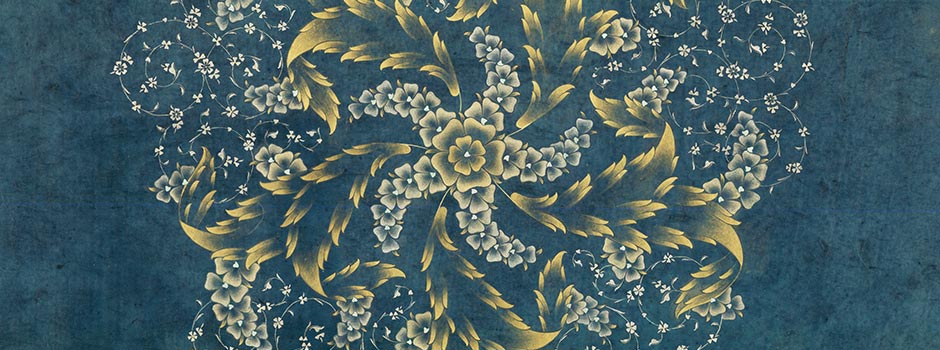
An Interview with Lutfiye Depeler The Life Lessons of Tezhip
Jun 26, 2017 Interview
This article is a part of the project 'Promotion of the Ottoman Cultural Heritage of Bosnia and Turkey' which is organized by Monolit, Association for Promoting Islamic Arts and supported by the Republic of Turkey (YTB - T.C. BAŞBAKANLIK Yurtdışı Türkler ve Akraba Topluluklar Başkanlığı / Prime Ministry, Presidency for Turks Abroad and Related Communities).
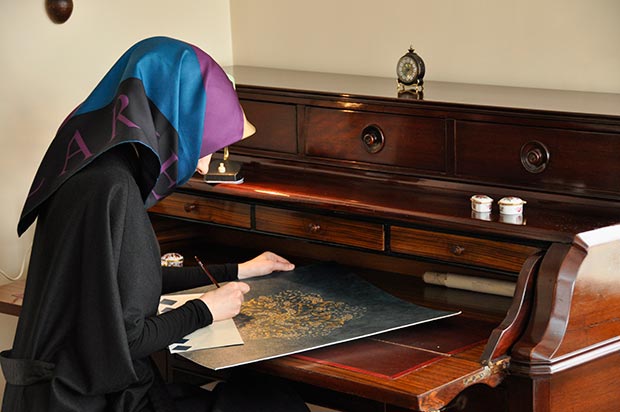 Lutfiye Depeler / Courtesy of the Artist
Lutfiye Depeler / Courtesy of the Artist
Art is a never-ending process of perfecting one’s skills: artists are kept going by the hope that the next work will be better than the last one. From this perspective, obtaining an ijazah, while an essential component in the transmission of knowledge of the Islamic traditional arts and the beginning of greater artistic responsibility, marks but a moment in the continuum of learning. Lutfiye Depeler is a young Konyali illumination artist in the making. She has practiced tezhip for seven years. As she continues her study to receive certification from a master, she has already known for years that the art of Islamic illumination is her life’s work.
 Lutfiye Depeler, Serbest çalışma, 18-18 cm, gold and watercolour, 2015 / Courtesy of the Artist
Lutfiye Depeler, Serbest çalışma, 18-18 cm, gold and watercolour, 2015 / Courtesy of the Artist
Certainly, this situation affected me positively. My late grandfather Abdullah Riza Al-Khattat who has artworks all over the world – was one of the calligraphers of the Prophet’s Mosque in Medina al-Munawarah. He was a very elegant person who was interested in Islamic music and poetry. I have therefore been familiar with the Islamic arts since my childhood by having grown up in a house full of the art of my artistic grandfather. I loved painting and drawing as a child. My family – especially my calligrapher brothers Seyit Ahmet and Abdurrahman – encouraged my love of drawing to practice illumination.
I practiced calligraphy for quite a while, but illumination attracted me more. I thought that illumination fitted more with my nature than calligraphy. And besides, the idea of collaborating with my brothers also influenced my preference.
First of all, it necessitates a proficient master. And every master might have different teaching methods. However, a student of illumination starts by first learning motifs. If I mention my own learning process; primarily, I studied line to learn nuance, then I learned how to draw each motif – leaves, panj, hatai, konjagul, rumi – and afterwards, I practiced composing patterns with these motifs. I then began to learn how to add colour to the compositions that I designed. Subsequently, I moved on to adorning actual calligraphic works. After that stage, I started to learn classical illumination and I still continue. The learning process never ends with this kind of art. Yes, I would agree with that. You can express yourself with the Islamic arts, but it is not the essential goal. The essential goals are to mature our characters and get the Islamic message across to people. As Dr. Çiçek Derman says, we should adorn our hearts by adorning books and papers. People who want to fulfil the art of illumination should be patient and talented first of all. Persistence and the ability to peg away at something are quite important for this art. For instance, I was working on a design a few years ago. I laboured over that design for months. Finally, when I thought it was complete, my teacher asked me to start over and I did! Frankly, studying illumination entails patience. As for what kind of person one becomes by practicing this art; tezhip makes you calmer, more peaceful, more delicate and disciplined. Illumination teaches one to better see the creation of Allah Subhanahu wa Ta’ala. Yes, I think this is the part of the Ottoman legacy. Even though the Islamic arts emerged long before the Ottoman period, the Ottomans greatly contributed to their progression. And the Islamic arts reached their apex at their time. But unfortunately, these arts didn’t get enough attention at the beginning of the Republican period and they were despised. Nowadays, people have thankfully started to show interest in the traditional arts once again. The first Basmala-isharef that I adorned is most special to me just as a writer’s first book or a poet’s first poem is. It was my first collaboration with my brother Seyit Ahmet. And this work is also my first one exhibited abroad. But if you ask which one of my works is the most successful, I am still an apprentice, therefore I can’t answer that easily. Even our masters point out that they are bettering their works in this infinite art with each passing day. So do I want to perfect my works day by day. I aim to focus on classical illumination for the next year inshaAllah. I want to examine the examples of 16th century – which is the golden age of illumination – and get inspired by the masters of the period like Karamemi and Abdullah Shirazi. If I mention my dream perhaps not for the next year, but someday, I desire to be good enough to adorn the Holy Qur’an InshaAllah.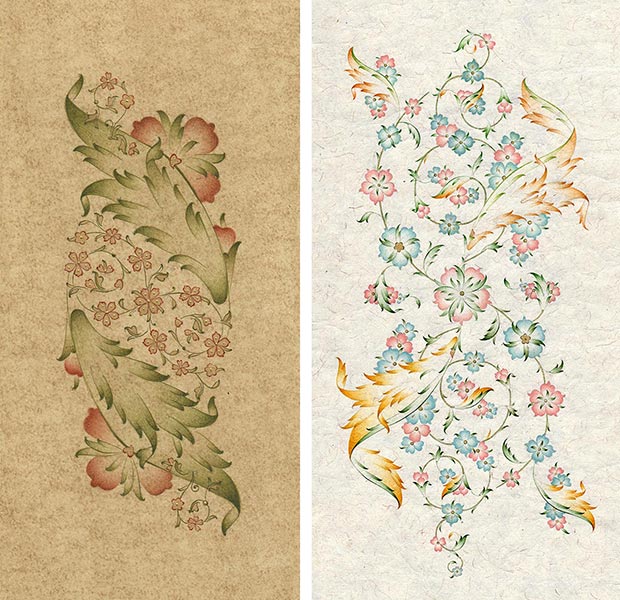 Lutfiye Depeler, L. Koltuk tasarimi, 7,5-16 cm, gold and watercolour, 2014 / R. Searching of colours: 19-37 cm, watercolour and gold, 2016 / Courtesy of the Artist>
Lutfiye Depeler, L. Koltuk tasarimi, 7,5-16 cm, gold and watercolour, 2014 / R. Searching of colours: 19-37 cm, watercolour and gold, 2016 / Courtesy of the Artist>
Journalism covers tezhip artists who have finished their studies and, as such, the public learns little about tezhip education. Could you tell us something about how a student of tezhip learns the art?
 Lutfiye Depeler, L. The bending leaf, 10-15,5 cm, white and fine gold, 2014 / R. Rosette, 8-18 cm, fine gold and white gold, 2015 / Courtesy of the Artist
Lutfiye Depeler, L. The bending leaf, 10-15,5 cm, white and fine gold, 2014 / R. Rosette, 8-18 cm, fine gold and white gold, 2015 / Courtesy of the ArtistArt is often defined as self-expression. The Islamic traditional arts, however, appear to also be about perfecting the self. Would you agree that the process of bettering your art is related to bettering yourself?
That is a very nice metaphor that highlights the spiritual aspect of beauty. What kind of character is needed to be a good tezhip artist and what kind of person does one become by practicing the art?
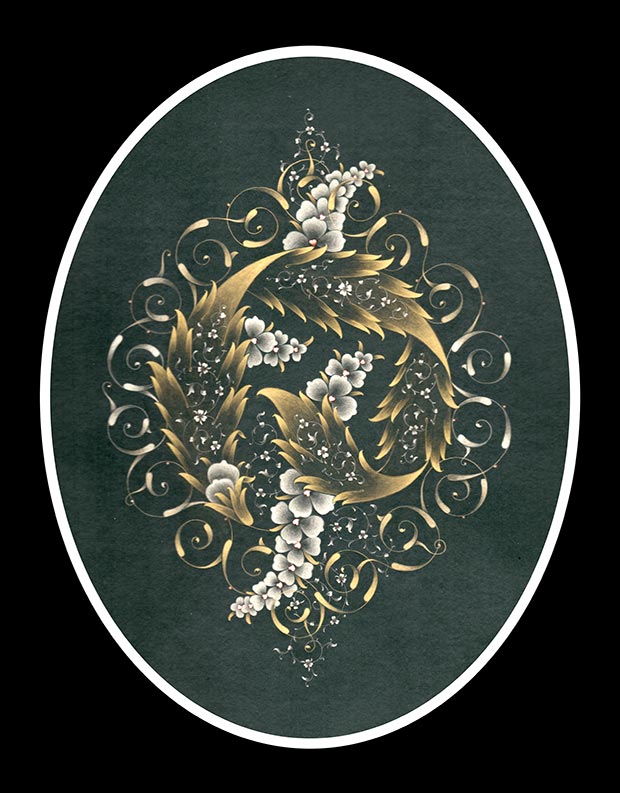 Lutfiye Depeler, Serbest tasarim: 32-40 cm, fine gold and white gold, 2011 / Courtesy of the Artist
Lutfiye Depeler, Serbest tasarim: 32-40 cm, fine gold and white gold, 2011 / Courtesy of the ArtistTurkey is the Muslim-majority country that has best preserved its Islamic arts heritage. Across the country, universities and various art institutions continue to teach ceramics, ebru, woodworking, calligraphy, bookbinding and illumination. Do you think this is part of the Ottoman legacy?
 Lutfiye Depeler, Serbest tezhip tasarimi, 42-42 cm, fine gold and white gold on handmade paper. 2015 / Courtesy of the Artist
Lutfiye Depeler, Serbest tezhip tasarimi, 42-42 cm, fine gold and white gold on handmade paper. 2015 / Courtesy of the ArtistYes, the situation offers much hope for their survival and development. Is there one of your works that means more to you than the others or that you consider the most successful?
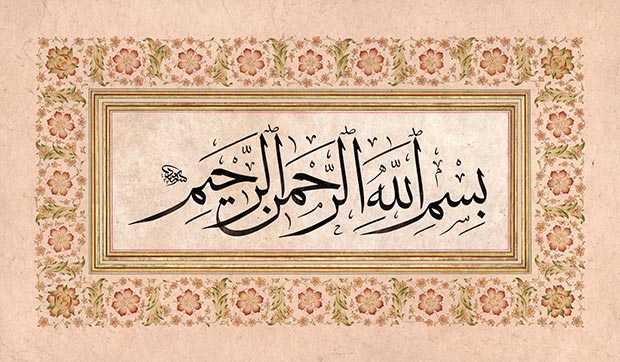 Muhaqqaq Basmala: Calligraphy by Seyit Ahmet Depeler, tezhip by Lutfiye Depeler. 42,5- 24,5 cm, gold and watercolour on handmade paper, 2013 / Courtesy of the Artist
Muhaqqaq Basmala: Calligraphy by Seyit Ahmet Depeler, tezhip by Lutfiye Depeler. 42,5- 24,5 cm, gold and watercolour on handmade paper, 2013 / Courtesy of the ArtistYes, all real students and masters of Islamic illumination know that one always remains a student in this art. What are your goals and dreams for the near future?
Comments
Add a comment